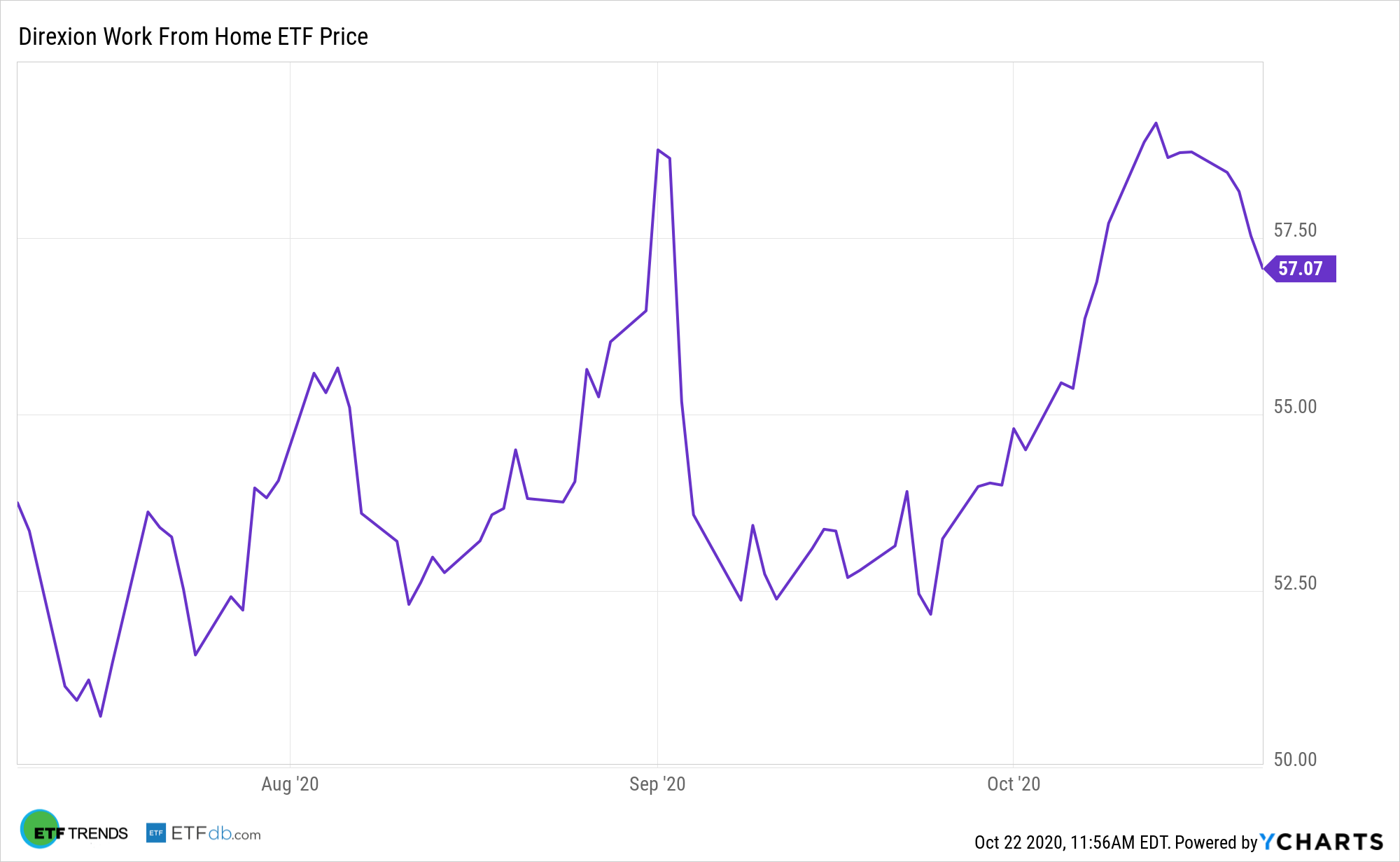The newly minted Direxion Work From Home ETF (WFH) is one of the great stories among this year’s group of rookie exchange traded funds. It owes a big assist to the coronavirus pandemic, but WFH has plenty of long-term positives to offer as well.
WFH offers access to companies across these four technology pillars, allowing investors to gain exposure to those companies that stand to benefit from an increasingly flexible work environment. Data confirm the pandemic has been a boon for the work from home investment thesis.
“The impositions of lockdowns and shut-ins forced many employers and employees to quickly revamp from their traditional office structure to remote working arrangements. By our estimates, at the peak of the pandemic lockdowns, 45% of employed U.S. workers were working from home,” according to Morningstar.
Working from Home for Good?
Integral to the WFH thesis is that working from home is a trend with momentum beyond the coronavirus pandemic.
The remote work theme may also be an excellent way to recruit workers moving forward. According to a recent Deloitte survey, 43% of millennials were allowed to work from home or other locations, but 75% would prefer to work remotely either completely or partially. According to an International Workplace Group’s (IWG) survey, 80% of respondents claimed that when faced with two similar employment offers, they would turn down those that did not offer flexible working.

“By our estimates, 9% of the workforce was working remotely (defined as working outside the office more than 80% of the time) before the pandemic, and we expect that percentage to rise to 13% in 2024—a 44% increase over a five-year period,” notes Morningstar.
Bolstering the long-term case for WFH is flex or hybrid work, where employees work from a few days a week and go into the office on other days.
“Further, we expect that many employees and employers will take a more flexible position toward working from home up to several days per week postpandemic. We think this hybrid model could more than double by 2025 to 9% of the workforce from 4% of the workforce in 2019,” notes Morningstar.
According to IWG, 65% of business leaders surveyed believed a flexible workspace reduces both capital and operational expenditure, manage risk, and consolidate their portfolio. Furthermore, 85% of the respondents stated that productivity increased as a result of greater flexibility.
For more on disruptive technologies, visit our Disruptive Technology Channel.
The opinions and forecasts expressed herein are solely those of Tom Lydon, and may not actually come to pass. Information on this site should not be used or construed as an offer to sell, a solicitation of an offer to buy, or a recommendation for any product.

